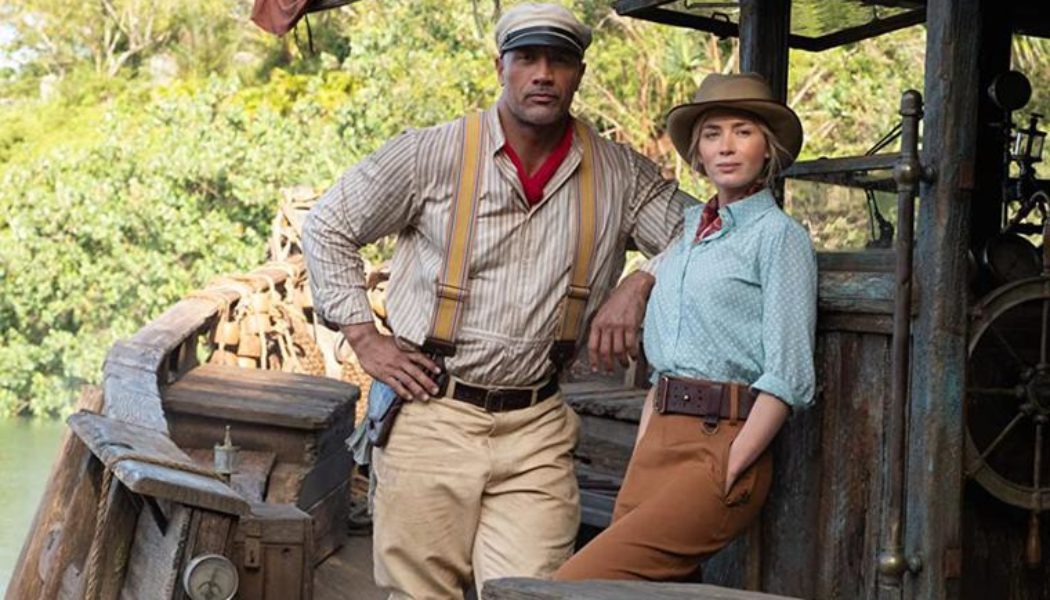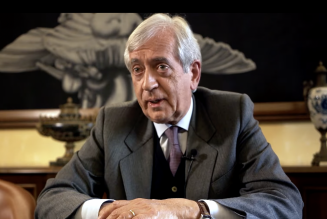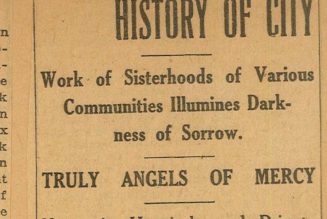
There’s a back story involving Spanish conquistadors cursed with immortality by wronged natives. A swaggering captain with a dark past who is both more and less than he seems.
There’s magic involving the rays of the moon, but also a quest for a mythical source of life deep in the jungle and a magic MacGuffin that points the way. We have supernatural antagonists whose deteriorating bodies have assumed the characteristics of lower life forms and menace from stereotyped ooga-booga natives (albeit with a twist).
Oh, and there’s an elaborately choreographed, stunt-driven escape sequence in which the protagonist exits a period London building via a second-story window, dangling over the street before dropping into a conveniently timed vehicle.
In short, Jungle Cruise plays like fan fiction for, like, all the Pirates of the Caribbean movies combined — a gambit you can sort of understand the five writers going with when you consider that the only other precedents for big-screen Disney theme-park attraction movies are The Haunted Mansion and The Country Bears.
In place of Johnny Depp, Kiera Knightley and Orlando Bloom, Jungle Cruise stars Dwayne Johnson, Emily Blunt and Jack Whitehall, which in 2021 is clearly at least two-thirds of an upgrade.
The strange magic of Depp’s 2003 debut as Capt. Jack Sparrow is something that no one (least of all Depp himself) is likely to match today — and Johnson isn’t about to try.
As Skipper Frank Wolff, a steamboat captain on the Amazon, Johnson is well within his comfort zone. He may have gotten his Hollywood start as the antagonist in the Brendan Fraser sequel The Mummy Returns, but he’s now a reliable fixture in swashbuckling roles that Fraser himself might once have played.
Johnson’s charisma is as outsize as his Maui-esque torso and his improbably wide grin, and his presence is a comforting promise that even if the movie isn’t (to invoke what Roger Ebert called the Siskel test) more entertaining than a documentary about the same actors having lunch, at least that shouldn’t be too bad.
As for Blunt, between her splendid starring turn in Mary Poppins Returns and her hard-edged heroics in Edge of Tomorrow and the Quiet Place movies, there’s no doubt that she’s more than equal to the lighthearted derring-do of Jungle Cruise.
Blunt plays Dr. Lily Houghton, a British scholar conspiring with her effete brother (Whitehall) to follow a secret map to a fabled destination with the help of a rough-around-the-edges American guide (Johnson), and — hey, Johnson really is playing the Fraser role in the setup to the 1999 Mummy movie, isn’t he? Lily even stilt-walks on a library ladder in her introductory sequence, although she makes it look better than Rachel Weisz was allowed to do.
You might also be reminded at times of the likes of Romancing the Stone, Raiders of the Lost Ark, and The African Queen — reminders that could incline you to revisit any of these well-crafted entertainments that hold up to any number of repeat viewings.
Will anyone who watches Jungle Cruise, in however forgiving a mood, be inclined to revisit it? Try as I might, I can’t imagine it.
If you’re tempted to go easy on the slipshod plot, just recall what a well-oiled machine the original Pirates of the Caribbean is (not to mention any of the older movies mentioned so far).
The cursed gold medallions in Pirates worked in a precise and elegant way, for reasons that made sense. There are “rules” in Jungle Cruise, too, but they’re random and nonsensical.
The MacGuffin is a Fountain of Youth stand-in called the Tears of the Moon, which are the petals of the legendary Tree of Life (not that one, a different Tree of Life somewhere in the Amazon) possessing miraculous healing powers.
The immense tree, which (like so many trees) grows in a vast, hidden underground cavern with only a tiny opening to the sky, blooms a) only under the direct light of the moon, and then for some reason b) only when you do the right thing with another MacGuffin — some Heart of Te Fiti thing or other. Also, the petals grow and then wither almost instantly unless they are immediately plucked before the light of the moon moves on. Just because!
Of course there’s an elaborate deathtrap puzzle-box guarding access to the tree (assuming you don’t just find that cavern skylight and rappel down). This massive feat of ancient engineering, dwarfing the Holy Grail deathtraps from Indiana Jones and the Last Crusade, exists how and why exactly? No explanation!
The film seems to have even less of a clue how to deal with its magic life-giving flowers than Last Crusade had regarding the Holy Grail. At least with the Grail they established that its power was confined to the temple. Here, the filmmakers begin by explicit setting up the possibility of curing all the world’s diseases, and then — what? Seriously, what? I’ve seen the movie, and I’m still not sure the screenwriters know the answer.
All of this would be fine in the Jumanji video-game universe, where we would also have the added pleasure of watching Johnson and Blunt play against type as computer avatars inhabited by other people’s personalities. The glaringly poor CGI would be more forgivable, too.
Perhaps director Jaume Collet-Serra is out of his element. I know him only from The Shallows, a tense survival/horror film dominated by the specificity of its setting. The “Amazon” of Jungle Cruise was patched together in Hawaii, Australia, Atlanta and lots of CPUs and feels as fake as the theme-park ride.
Ironically, the movie’s most notable accomplishment is sending up the theme-park ride’s modest pleasures, from the animatronic animals and pretend dangers to the skipper’s groanworthy puns.
Frank, you see, specializes in bogus tours of the real Amazon. That is, he pilots tourists up and down a well-traveled section of the Amazon, but he’s contrived an array of fake spectacles and dangers to liven up the experience — and occasionally pressures a little extra money from frightened passengers.
Frank is also an inveterate punster, the one part of his schtick he seems to do for the sheer pleasure of it. (“We’re heading into headhunter territory now, which is a terrible place to be headed.”) Nobody appreciates this except Lily’s brother McGregor, played by Whitehall as a buffoonish dandy of a sort that might be described as “queer-coded,” if not for the brief scene in which he comes out to Frank.
The word “gay” isn’t used, but McGregor indicates that his lack of interest in women — more precisely, that his “interests happily lie elsewhere” — led to his ostracization by his family, with only Lily accepting him.
Frank, too, is affirming, raising a glass “to elsewhere.” And that’s the end of that, at least until a string of winking double entendres in a scene involving impalement. I’m honestly curious whether this approach to “representation” pleases anyone, or whether Disney’s insistent but timid “progressivism” falls between two stools and leaves no one happy.
I see I forgot about Jesse Plemons’ murderous German Prince Joachim, who pursues our heroes up the Amazon in a U-boat. Also I haven’t mentioned Paul Giamatti, wasted as a scheming harbormaster, or Édgar Ramírez as the leader of the cursed conquistadors. I promise I’ll try to be more organized reviewing Jungle Cruise 2.
Caveat Spectator: Stylized violence; icky creature effects; brief, oblique references to homosexuality and brief double entendres; limited profanity. Teens and up.
Join Our Telegram Group : Salvation & Prosperity









